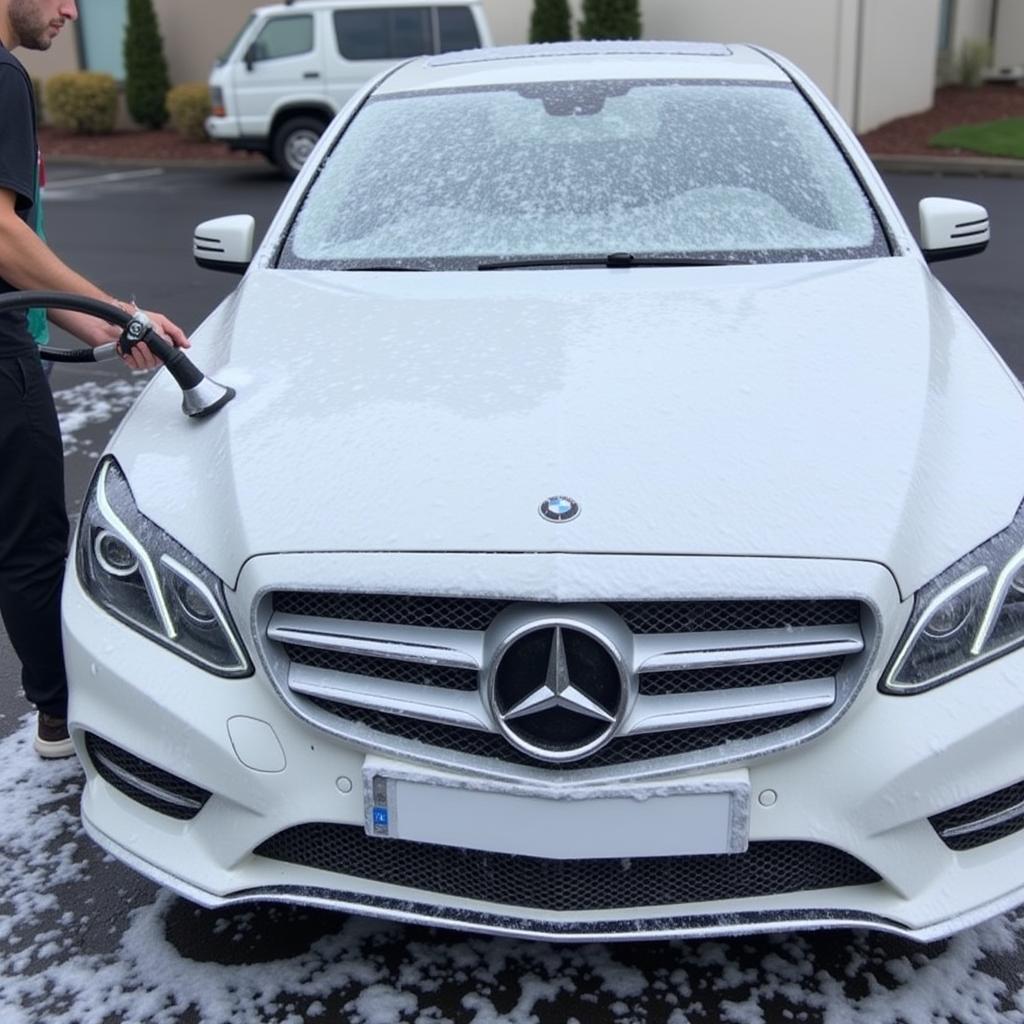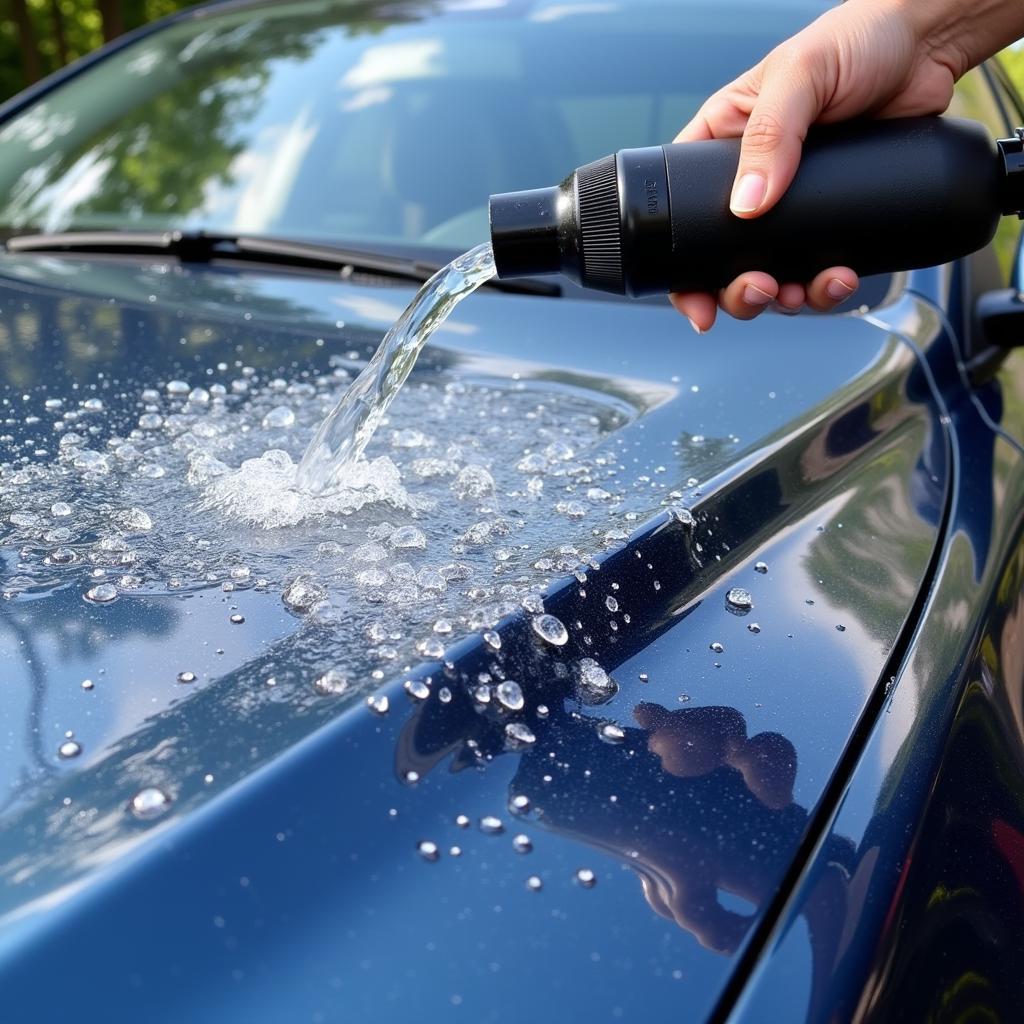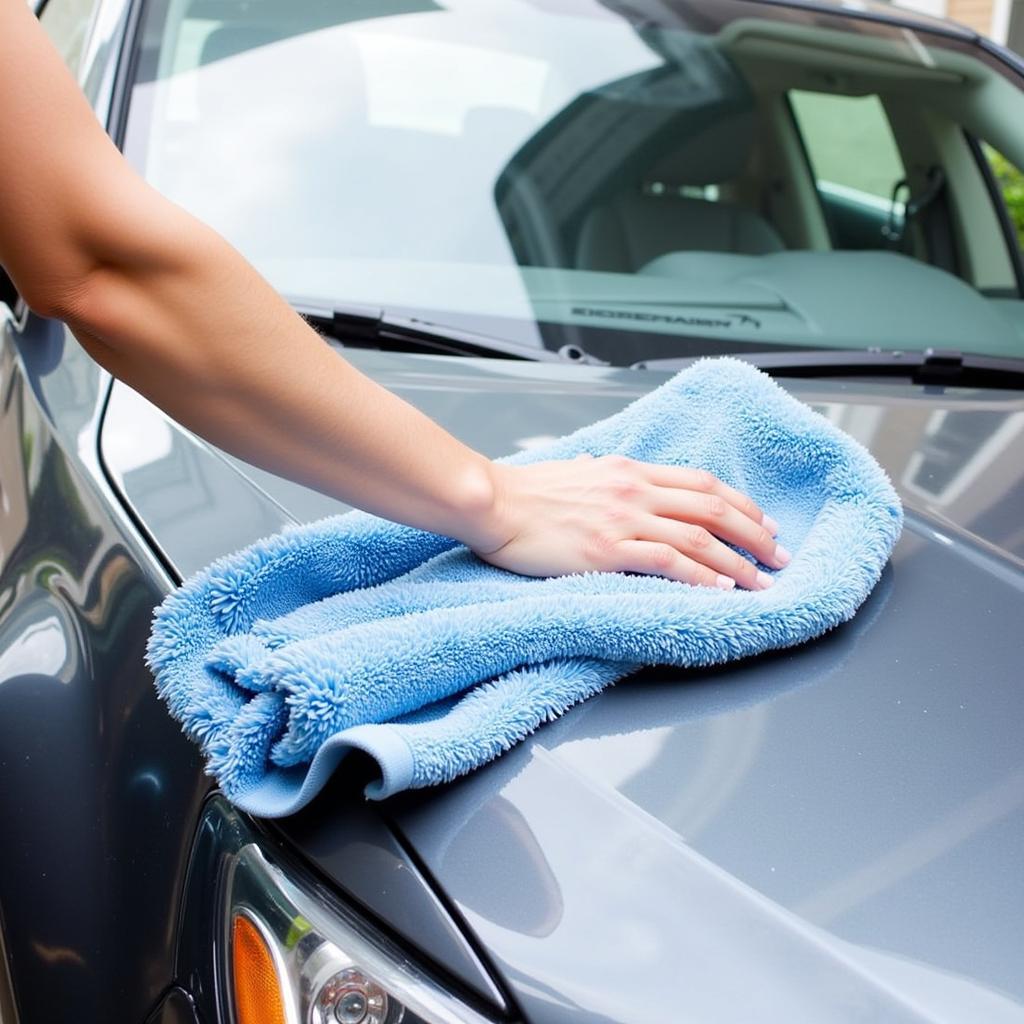Water is fundamental to car detailing, from the initial wash to the final rinse. Waterworks Car Detailing encompasses every aspect of this process, emphasizing the importance of correct techniques and quality water to achieve a flawless finish. Understanding the nuances of water usage in car detailing is key to transforming your vehicle from simply clean to truly showroom-worthy.
The Importance of Water in Car Detailing
Water is much more than just a cleaning agent in car detailing; it’s the foundation of the entire process. From pre-washing to rinsing off cleaning solutions, the quality and application methods of water directly impact the final result. Using hard water, for example, can leave unsightly water spots and mineral deposits, negating the effort put into the detailing process. Similarly, incorrect washing techniques, even with purified water, can swirl dirt and debris across the paint, creating micro-scratches that dull the finish.
Pre-Wash: The First Line of Defense
The pre-wash stage is designed to loosen and remove loose dirt and grime before physically touching the car. This minimizes the risk of scratching the paint during the contact wash. Effective pre-washing relies on a combination of quality pre-wash solutions and proper water pressure. A foam cannon or pressure sprayer can be used to apply the solution, allowing it to dwell and lift dirt before being rinsed away.
 Car Being Pre-Washed with a Foam Cannon
Car Being Pre-Washed with a Foam Cannon
The Contact Wash: Gentle Cleaning for a Pristine Finish
The contact wash involves gently washing the vehicle with a wash mitt and a dedicated car wash soap. The two-bucket method is recommended here, using one bucket for the soapy water and another for rinsing the mitt. This prevents cross-contamination and reduces the risk of scratching. Water quality plays a crucial role in this stage, as hard water can interfere with the soap’s effectiveness and leave behind mineral deposits.
Rinsing: Removing Residue for a Spotless Shine
Rinsing is the crucial step of removing all cleaning solutions and residue from the car’s surface. A thorough rinse with clean, preferably filtered water is essential. The sheeting method, where water is allowed to sheet off the car’s surface, helps minimize water spots. This technique is particularly important when using hard water.
 Rinsing a Car Using the Sheeting Method
Rinsing a Car Using the Sheeting Method
Water Purification for Car Detailing
Investing in a water purification system can significantly enhance your car detailing results, especially in areas with hard water. These systems remove minerals and impurities that can cause water spots and interfere with cleaning solutions. From simple filtration systems to more advanced reverse osmosis units, there are options to suit various budgets and needs.
Choosing the Right Water Purification System
Selecting the right water purification system depends on your specific needs and water quality. A water hardness test can determine the level of minerals in your water, guiding your choice. For light to moderate hardness, a simple filtration system might suffice. However, for heavily mineralized water, a reverse osmosis system is often the best solution.
“Investing in a quality water filtration system is a game-changer for car detailing. It eliminates the frustration of water spots and allows cleaning solutions to work at their optimal efficiency.” – David Miller, Certified Detailing Technician.
Drying Techniques: The Final Touch
After rinsing, drying the car properly is crucial to prevent water spots and streaks. High-quality microfiber drying towels are essential for absorbing water quickly and effectively. Techniques like the blotting method minimize friction and the risk of marring the finish.
 Drying a Car with a Microfiber Towel
Drying a Car with a Microfiber Towel
“Proper drying is just as important as the washing process. A good microfiber towel and the right technique will ensure a flawless, spot-free finish.” – Sarah Johnson, Professional Detailer.
Conclusion
Waterworks car detailing is more than just washing and rinsing; it’s a meticulous process that utilizes proper techniques and quality water to achieve a perfect finish. By understanding the importance of each stage, from pre-washing to drying, and investing in the right equipment, you can elevate your car detailing game and keep your vehicle looking its best. Remember, the quality of your water and your technique are key to unlocking a truly stunning shine.
FAQ
-
What is the best way to avoid water spots when detailing? Using filtered water and the sheeting method during rinsing significantly reduces water spots.
-
Why is a pre-wash important? It removes loose dirt and grime, preventing scratches during the contact wash.
-
What is the two-bucket method? It uses one bucket for soapy water and another for rinsing the wash mitt, minimizing cross-contamination.
-
What type of towel is best for drying a car? High-quality microfiber towels are ideal for absorbing water quickly and effectively.
-
Do I need a water purification system for car detailing? It’s highly recommended, especially in hard water areas, to prevent water spots and enhance cleaning.
-
What is the sheeting method? It’s a rinsing technique where water is allowed to sheet off the car, minimizing water spots.
-
What are the key stages of waterworks car detailing? Pre-wash, contact wash, rinsing, and drying are the crucial stages.
Need help? Contact us via WhatsApp: +1(641)206-8880, Email: [email protected]. We have a 24/7 customer service team.

Leave a Reply